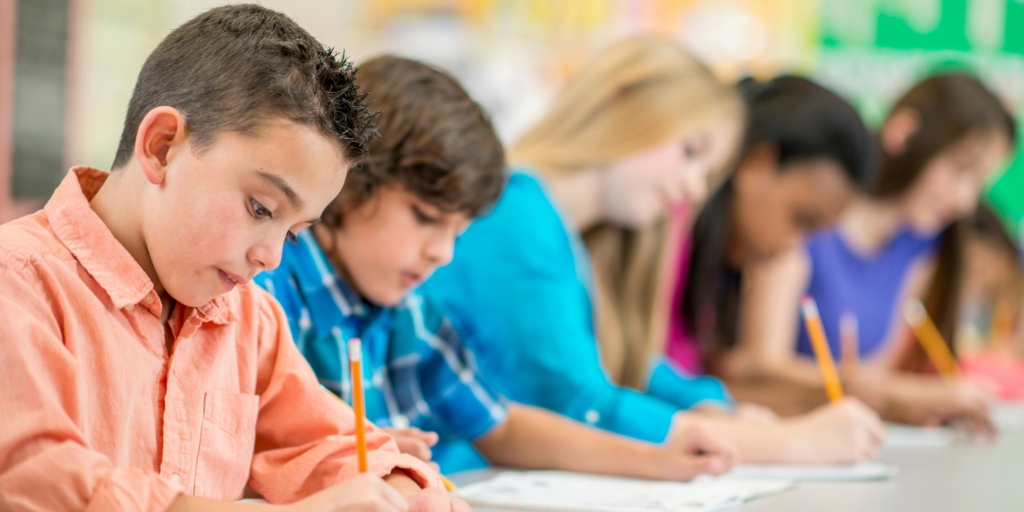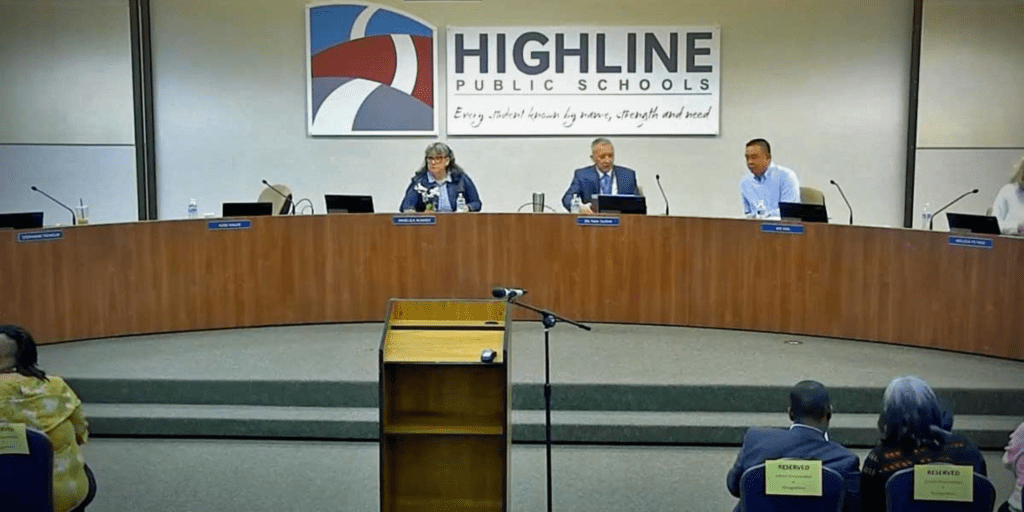Activate Innovation: When It Comes to the Future of Science Kits – the Sky’s the Limit! (part 3)
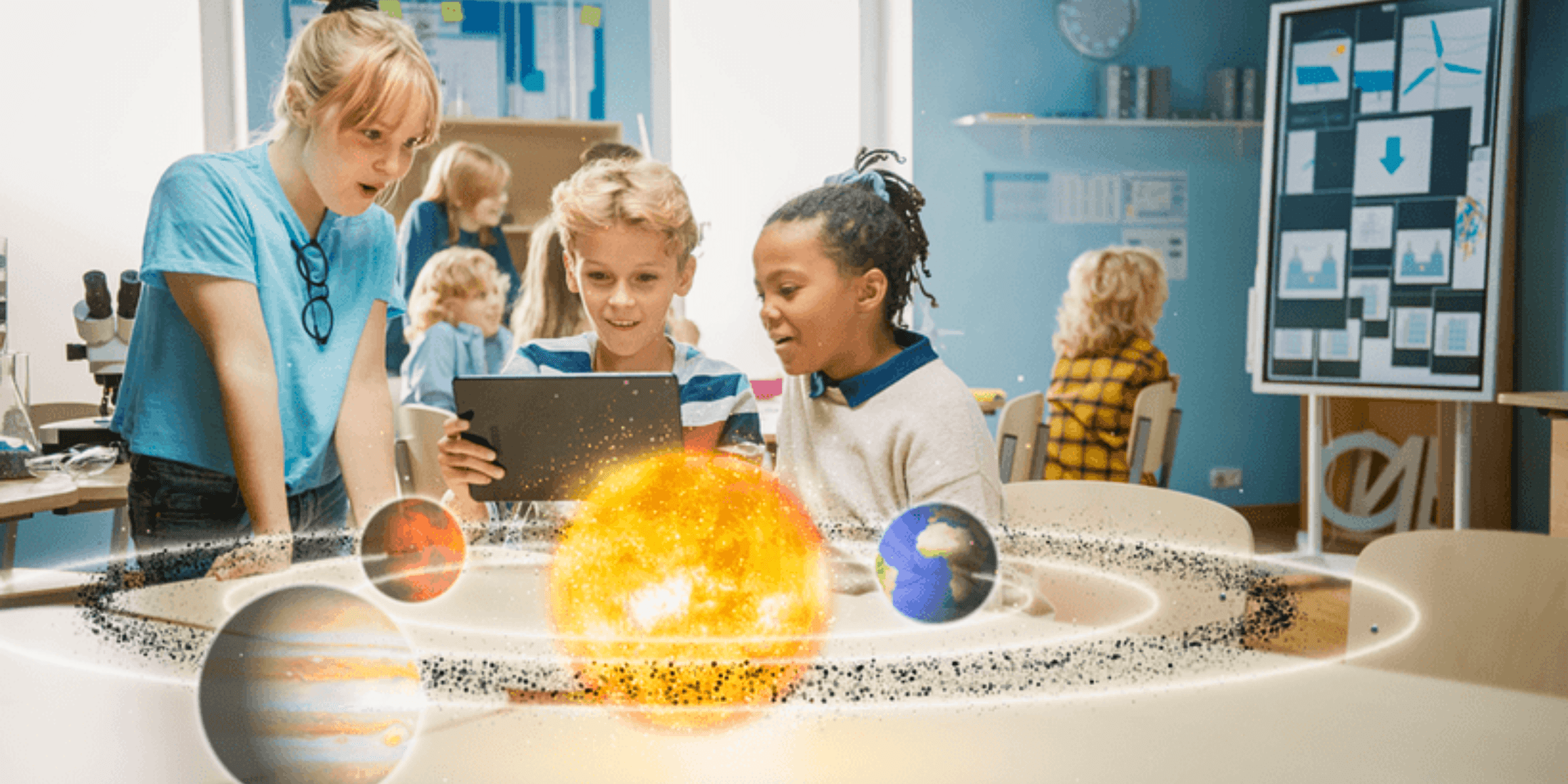
QuickTake: The future of science education is being shaped by increasing digitalization, a focus on global issues, and AI. Science kits will need to evolve in tandem with these trends, offering students a realistic and engaging gateway into the world of science and the future.
The Future Is Just Getting Started
Welcome to the final post of our three-part series about the exciting evolution of classroom science kits!
If you've been with us since the beginning, you've journeyed through the history of these game-changing tools and seen firsthand how they're adapting to fit the ever-changing needs of today's diverse learners.
Dana Turner, Operations Manager at Activate Learning, has been our knowledgeable guide throughout this journey. With her extensive experience, spanning over 25 years, in developing and shipping science kits to schools nationwide, she's been a first-hand witness and key participant in the profound transformation of science teaching and learning.
In part one of our series, Dana gave us a rare behind-the-scenes look into the process of developing innovative science kits. She highlighted the crucial questions her team continuously tackles to stay at the cutting edge of innovation while addressing the real classroom needs of teachers and students. These questions included:
"How do we make this easier for the teacher to implement? How do we assure the correct outcome every time? What can we do to ease that transition for the teacher in the classroom and increase the confidence and comfort level? How can we help the teacher with classroom management? Over time what technological improvements are we seeing in the market as a whole? Can we take this transpiration activity and automate it, integrate it, simulate it and ultimately VR it?"
Inspired by Dana's enlightening approach and queries, we've chosen to format this final piece slightly differently from the previous ones. We're presenting ten thought-provoking questions on the future of science kits.
Recent, rapid breakthroughs in AI signal an unpredictable future that's both exciting and a bit unsettling. But rather than feeling overwhelmed, educators can turn this into an opportunity. By focusing on what we truly want and need in our science-teaching tools, we can steer the innovation towards benefiting all learners and a more equitable future. It starts by asking the right questions.
So, let's not just predict the future, but actively shape it!
The Importance of Looking Ahead
As our world changes quickly, driven by technological innovations and global challenges, it's critical that we approach education with an eye to the future. Our educational practices, tools, and pedagogies need to evolve in tandem to remain relevant and effective.
A recent study published by Oxford University Press, The Evolution of Science Education, questioned 398 teachers and experts from 22 countries about the future of science education. The goal was to understand what knowledge and skills children will need to further science and address the scientific challenges that we face in the coming 25 years. It offers enlightening insights into educators' perspectives on the future of science education.
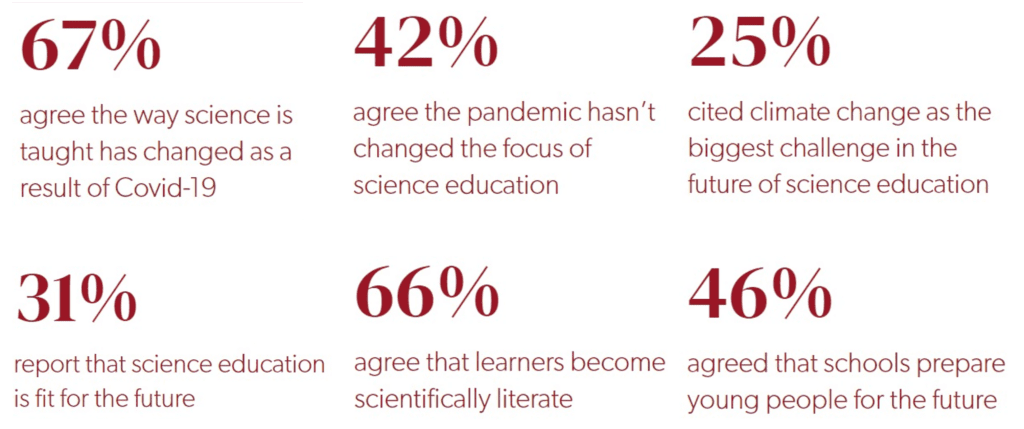
Many educators believe in the need to prepare students for future challenges, a belief that will shape the future of science kits. These kits are not just responses to abstract notions of the future; they are tools designed to prepare students for imminent realities we face.
As we highlighted in a previous post, Why Teachers Should Include Emerging Science in STEM Learning, the rapid pace of scientific discoveries and the demand in the labor market for students to be proficient in STEM skills, necessitates a dynamic approach to science education, one that includes not just established knowledge but also the frontiers of scientific understanding.
What exactly are these future industry requirements that underscore the urgent need for educators to equip students with the skills to succeed? Furthermore, what might these necessary skills look like in 5-10 years?
The Future of Jobs Report 2023 by the World Economic Forum explores the transformation of jobs and skills in the upcoming five years, providing a sneak peek into future in-demand roles. According to the report, the fastest-growing roles today are driven by technology, digitalization and sustainability.
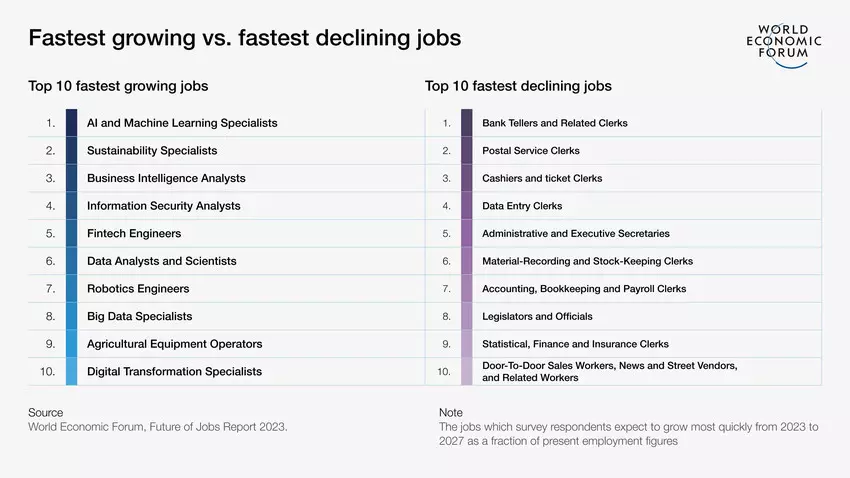
Organizations' workforce development initiatives for 2023 to 2027 prioritize not only technical skills but also soft skills. Skills such as creative thinking, empathy, and active learning are highly valued, often even above technical proficiency.
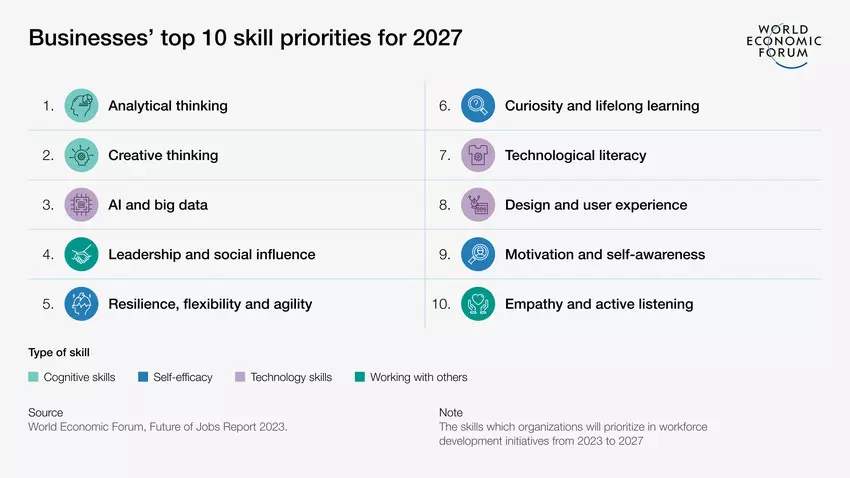
In part one of this series, Dana explained how Activate Learning's NGSS-aligned science kits and curricula like OpenSciEd and IQWST are designed to meet this very challenge:
"We are also empowering the student to evolve into their future selves by arming them with collaboration, communication, development of explanations, critical thinking, data collection, organization and analyzation of data, observation, and interpretation, and using evidence to support claims. Students are engaging in complex situations and collaborating on what they need to learn to manage the situation effectively. These are what our kits offer."
So, when we think about the future of science kits, we need to take this same forward-thinking framework. What emerging scientific concepts and discoveries could be encapsulated in the science kits of tomorrow? How can we ensure these kits continue to spark curiosity, foster critical thinking, and prepare learners for a future rich in scientific and technological advancements?
In contemplating the future of science kits, we're not just speculating on the trajectory of a single educational tool. We're taking a bird's-eye view of science education, exploring how it can empower students with the know-how they'll need to steer their way through an increasingly complex world.
By looking ahead, we're ensuring that our science education - and the tools it employs - remains fit for purpose, primed for progress, and ready to inspire the young minds that will pioneer our future.
Decoding the Future: Eight Key Questions
As we pivot our gaze towards what lies beyond the horizon in the next 5+ years, we want to make sure this exploration is far from unilateral. Instead, we invite you to join us in this forward-thinking conversation. This isn't mere speculation; it's a proactive response to anticipated changes in science education, guided by current trends and research. These questions are meant to be thought-provoking, conversation-starters to explore the future we want.
1. What broader emerging trends in education are likely to impact the design and use of science kits?
In response to a rapidly evolving world, education is shifting its focus. Google's The Future of Education report, for example, identifies seismic trends (like climate change requirements) that are disrupting and reinventing education globally. It's important to consider these transformative trends and how they are informing the development of future science kits.
2. What emerging pedagogical shifts can we anticipate becoming mainstream in the next 5+ years and how might these changes guide the development of science kits and hands-on learning?
As new pedagogies emerge such as formative analytics, teachback, place-based learning, learning with drones, learning with robots, and citizen inquiry, the role and implementation of science kits will also evolve.
3. How will feedback from teachers, students, and districts inform the future development of science kits?
As schools incorporate AI and virtual technologies into classroom learning, the experiences of teachers and students using these tools will be vital for their effective development and implementation. It is key to establish smooth, frictionless methods for collecting experiential insights and data from all stakeholders and encouraging their participation in the innovation process.
4. How can science kits continue to promote hands-on learning in increasingly digital learning environments?
Science kits will need to offer students a blended learning experience that harmonizes the virtual and physical realms seamlessly - fostering an appreciation for hands-on learning amidst the digital surge of technologies like AI, VR/AR, and digital twins.
5. How can science kits better accommodate and adapt to different learning styles and needs in the future?
The evolution of assistive technologies and advancements in AI offer exciting potential solutions for inclusive education. Future science kits could offer customizable content and multi-modal learning experiences, accommodating diverse learning styles and specific needs, such as those of neurodivergent learners and students with disabilities.
6. How might integrated STEM education reshape the role of science kits and professional learning?
As new scientific fields and technologies rapidly emerge, an interdisciplinary approach to science education is crucial. Science kits, in this context, should evolve to incorporate new and diverse elements from technology, engineering, and math, alongside science, seamlessly to provide a holistic learning experience that will better prepare students for a broad spectrum of STEM jobs. Teachers will also need continuous professional learning and support.
7. How will future science kits incorporate disruptions to real-world scientific processes like hypothesis formation, analysis, and discovery??
Technological innovations like AI are rapidly disrupting traditional scientific processes, even generating hypotheses and making new discoveries. Science kits aim to mimic real-world scientific work for students. Thus, these groundbreaking ways of conducting science will need to be translated into educational frameworks and reflected in the science kits of the future.
8. How will innovations in supply chain and manufacturing change physical components of science kits in the future including developing equipment and materials, and delivery?
In the second part of our series, Dana outlined the challenges schools face when implementing science kits, such as budget constraints, logistics, equipment maintenance, and OSHA standards compliance. Innovations in supply chain and manufacturing, including augmented reality, digital twins, rapid prototyping through 3D printing, and robotics, promise to influence how science kits are developed and delivered, potentially addressing some of these key challenges.
The future of science education is being shaped by increasing digitalization, a focus on global issues, and AI. Science kits will need to evolve in tandem with these trends, offering students a realistic and engaging gateway into both the world of science and the future.
Earlier in this series, Dana emphasized that science kit innovation is fundamentally about the interactions between teachers, students, and the tools, and how these resources can facilitate a paradigm shift from traditional instruction-based to inquiry-based learning. It's about how the seemingly simple, humble science kit can morph into a powerhouse of discovery and learning, creating an environment where students are not just passive recipients of information, but active seekers of knowledge and problem solvers.
Reflecting on the future, Dana shared her optimism:
"What I have seen in the past, I hope to continue to see in the future: improvement, improvement, and more improvement. Sometimes the equipment embodies that improvement, and other times I've seen equipment propel it. As for the future, as my grandma used to say to me, "The sky's the limit," and that is how I view the future of kits!"
We wholeheartedly share this optimism about the future!
* * * * *
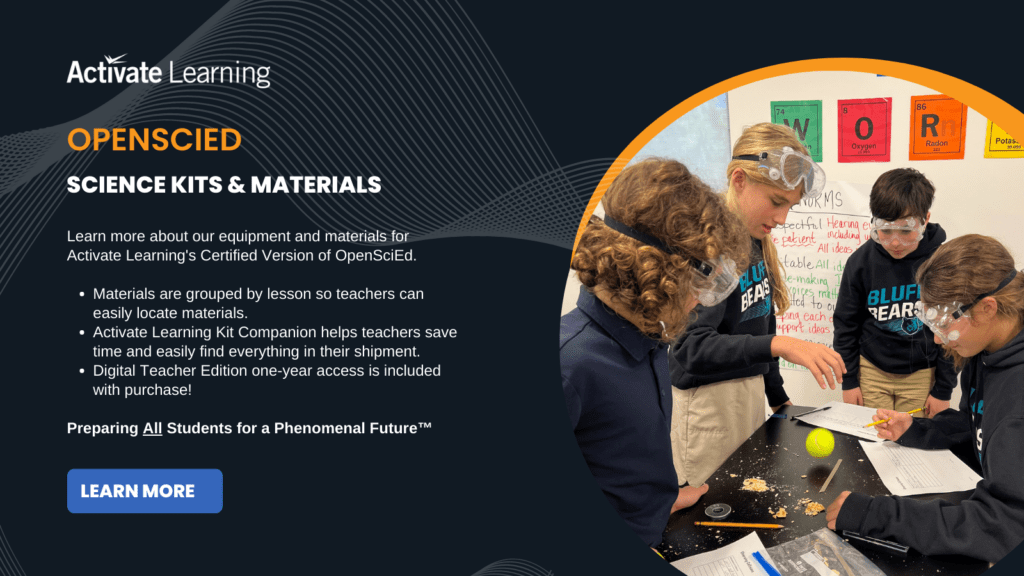

![OpenSciEd Biology High School Students [New Mission High School seniors (from left) Darareaksmey Chhim, Mario Fils, and Dorian Planto present their innovative idea for plastic-consuming bacteria at the Synthetic Biology Shark Tank Competition held at BU's Biological Design Center on April 26, 2024. CREDIT: Boston University]](https://activatelearning.com/wp-content/uploads/bb-plugin/cache/OpenSciEd-Biology-High-School-Students-1024x512-panorama-85c0139662e0f8066065e394489e9f95-.png)
